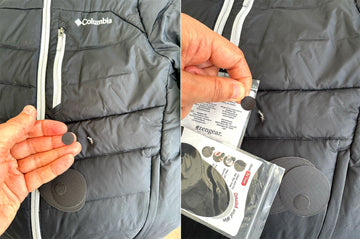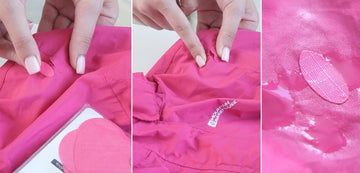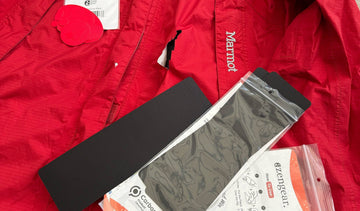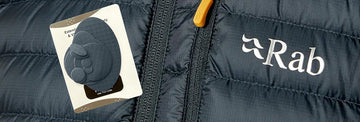Causes of Shin Splints and How Runners Can Prevent Them
by Emily Jannet on Mar 06, 2023
Shin splints are a common injury among runners, athletes, and people who engage in high-impact activities such as basketball, dancing, and soccer. Medically known as medial tibial stress syndrome, shin splints cause pain and discomfort in the lower leg, specifically the shin bone (tibia). The pain can be mild to severe and can significantly impact a person's ability to exercise and perform daily activities.

In this blog post, we will discuss the causes of shin splints and how runners can prevent and alleviate pain from this injury. Additionally, we will talk about the benefits of calf compression sleeves and specifically, a brand that has received positive reviews, the aZengear compression socks and calf support sleeves.
Causes of Shin Splints
Shin splints are caused by overuse and stress on the muscles and bones in the lower leg. There are several factors that contribute to this stress, including:
- Running on hard surfaces: Running on hard surfaces like concrete or asphalt puts more stress on the lower leg muscles and bones than running on softer surfaces like grass or dirt.
- Poor running technique: Poor running technique, such as over-striding or running on the balls of the feet, can cause stress on the lower leg muscles and bones.
- Overtraining: Running too much, too soon, or without proper rest can lead to overuse injuries like shin splints.
- Wearing worn-out shoes: Shoes that are worn out or do not fit correctly can cause stress on the lower leg muscles and bones.
- Flat feet: People with flat feet are more prone to developing shin splints because their arches do not absorb shock as effectively.
Prevention and Treatment of Shin Splints
Fortunately, there are steps runners can take to prevent shin splints from developing and alleviate pain if they do occur.

- Proper Running Technique: Ensure you have proper running technique to avoid straining your lower legs. This can be achieved by running tall, ensuring your feet land underneath you, and avoiding over-striding.
- Gradual Increase in Intensity: Gradually increase your intensity, such as mileage or pace, over a period of weeks or months rather than increasing abruptly.
- Stretching and Strengthening Exercises: Stretch and perform strengthening exercises for your lower leg muscles, including the tibialis anterior, soleus, and gastrocnemius. A simple exercise is toe raises, where you stand on a step with your heels hanging off the edge, raise your toes up, and then slowly lower them down.
- Proper Footwear: Invest in a good pair of running shoes that provide support and cushioning. Replace your shoes every 300-500 miles, depending on your body weight, running style, and the shoe's quality.
- Calf Compression Sleeves: Wearing calf compression sleeves can help prevent and alleviate pain from shin splints. Compression sleeves apply pressure to the muscles, reducing inflammation and improving blood flow.
Benefits of Calf Compression Sleeves
Calf compression sleeves have become increasingly popular among athletes and runners for their ability to improve performance, reduce muscle soreness, and prevent injuries. Additionally, compression sleeves have been shown to improve circulation and reduce the risk of deep vein thrombosis (DVT).
Compression sleeves work by applying pressure to the muscles, which improves blood flow and reduces inflammation. This pressure helps to prevent the buildup of lactic acid, which is responsible for muscle fatigue and soreness. Furthermore, the compression helps to stabilise the muscles, reducing the risk of injury and aiding in recovery.
aZengear Compression Socks and Calf Support Sleeves
aZengear calf compression sleeves and graduated compression socks are made from high-quality materials that are durable, breathable, and provide a snug fit that supports and stabilizes the calf muscles. They've been tested and reviewed by athletes and runners, who have reported positive results in terms of reduced pain and improved performance. These compression sleeves are suitable for both men and women and can be worn during and after exercise.
Conclusion
Shin splints are a common injury among runners and athletes, but they can be prevented and alleviated with proper precautions and treatment. Runners can take steps to prevent shin splints by practicing proper running technique, gradually increasing intensity, stretching and strengthening exercises, wearing proper footwear, and using calf compression sleeves.
Calf compression sleeves are an excellent option for preventing and treating shin splints, reducing muscle soreness, and improving performance. The aZengear compression socks and calf support sleeves are a reliable brand that has received positive reviews and feedback from athletes and runners.
Overall, by taking the necessary precautions and using the right tools, runners can minimize their risk of developing shin splints and other injuries, allowing them to continue to enjoy their sport and maintain an active lifestyle.
References:
- "Shin splints." Mayo Clinic, Mayo Foundation for Medical Education and Research, 20 Apr. 2021, https://www.mayoclinic.org/diseases-conditions/shin-splints/symptoms-causes/syc-20354105.
- "The Benefits of Calf Compression Sleeves for Runners." Verywell Fit, 8 May 2020, https://www.verywellfit.com/the-benefits-of-calf-compression-sleeves-for-runners-2911248.
- "aZengear Compression Socks and Calf Support Sleeves." aZengear, https://azengear.com/collections/all.





